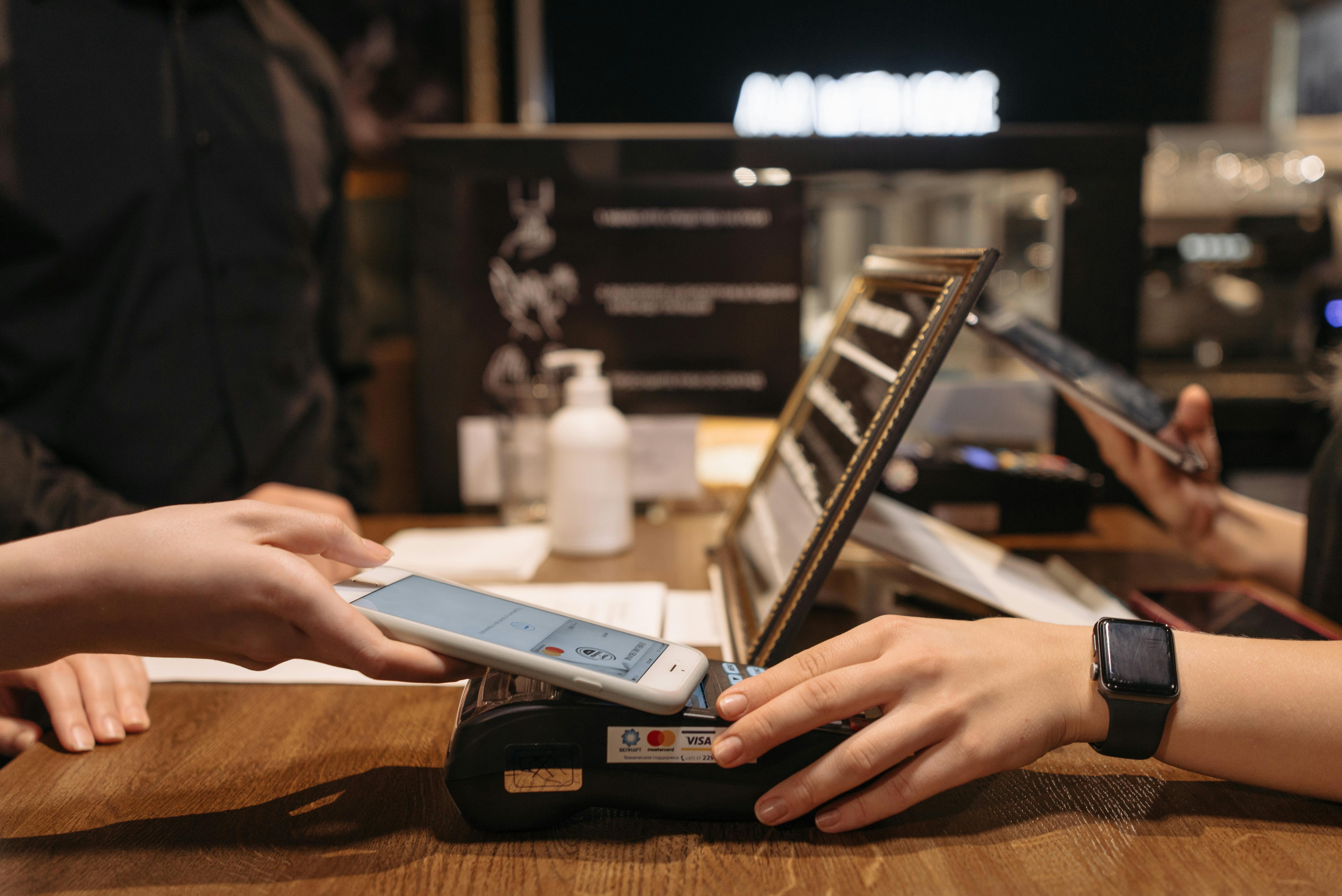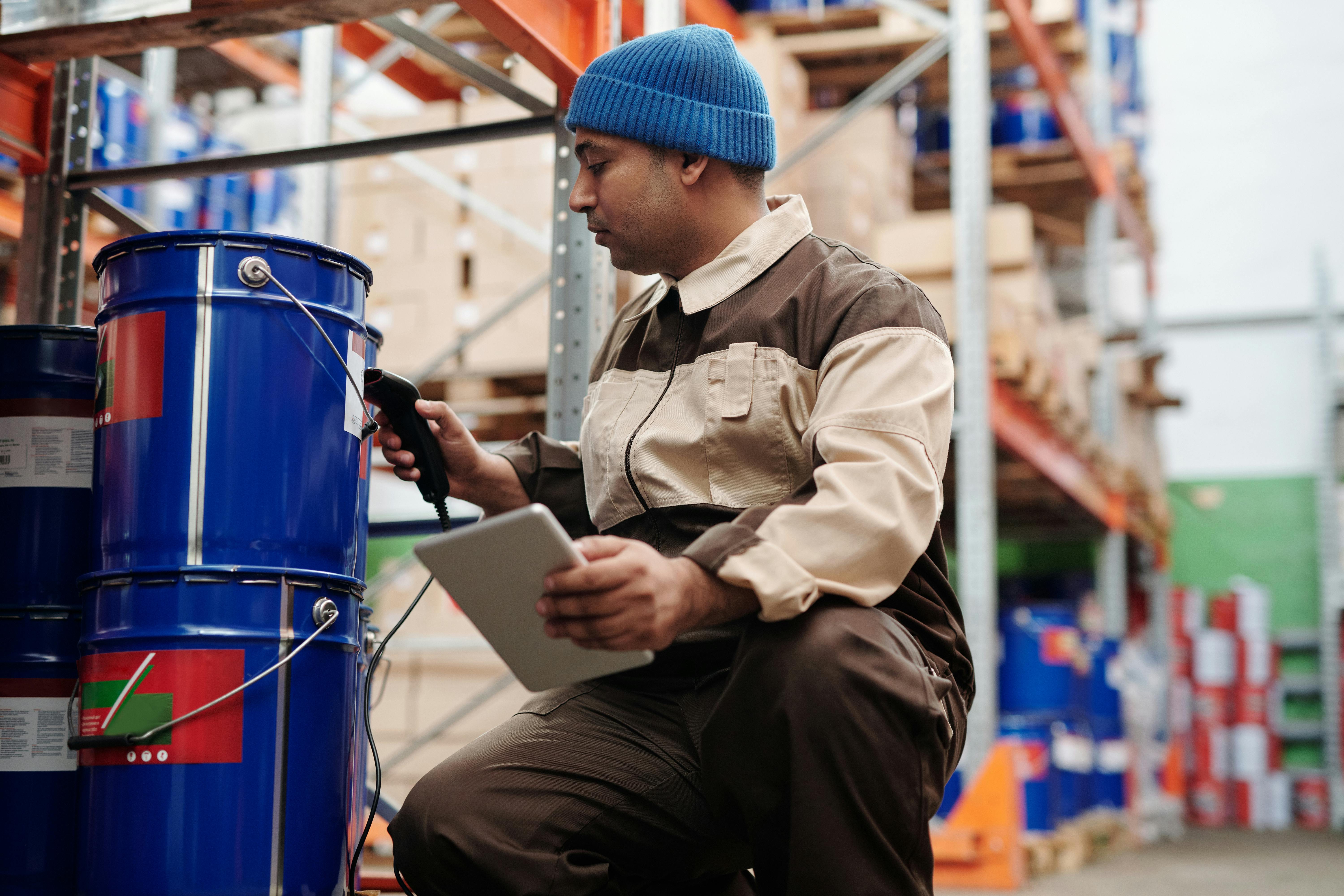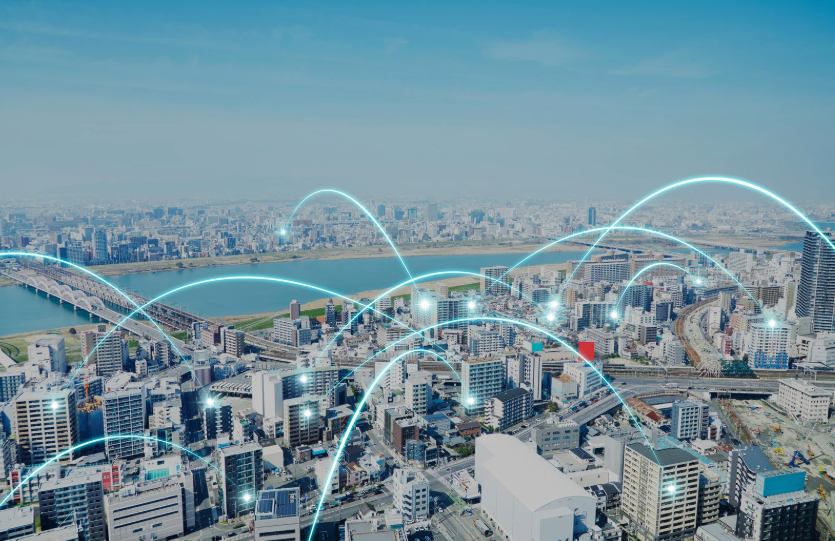
In today’s retail landscape, technology is the backbone of franchise operations. Whether it’s a boutique furniture store, a bustling restaurant, or an entertainment venue, franchises depend on reliable networks, cloud-based apps, and efficient support. This article explores how SD-WAN (Software-Defined Wide Area Networking) and managed IT services empower multi-location businesses with stable connectivity and proactive support. We’ll also break down typical IT costs per store and provide examples from different retail segments, from furniture retailers to fast-paced eateries, to illustrate these concepts in action.
For franchises with multiple locations, connectivity is king. Each store must stay connected to process sales, access cloud applications, and communicate with head office. Traditional networks (like single broadband lines or costly MPLS circuits) often struggle with reliability or expense. This is where SD-WAN comes in. SD-WAN is a modern networking approach that uses software to intelligently manage multiple internet connections (fiber, cable, 4G/5G, etc.), ensuring that critical applications always have a fast, reliable link.
Not long ago, SD-WAN was seen as an enterprise-only solution. It primarily served large companies with complex WANs linking dozens of sites. But times have changed. New “standalone” or cloud-first SD-WAN solutions now cater to smaller businesses and franchises, offering them affordable, quick-to-deploy connectivity packages. These packages recognise that many small retailers rely heavily on cloud-based apps and SaaS services, and they bundle cost-effective broadband links with fully managed IT services so that owners can focus on the business, not the network. In short, SD-WAN is becoming accessible even to a franchise with just a handful of stores.
Why is SD-WAN so important for retail connectivity? Imagine a store’s point-of-sale system and credit card machine going down because the internet is offline. Outages mean lost sales, frustrated customers, and damaged reputation. Unfortunately, a single broadband connection can be unreliable, if it fails or gets congested, there’s no backup. Bandwidth-heavy tasks like cloud-based inventory, VoIP calls, or video streaming can also bog down a basic connection.

SD-WAN solves these issues by using multiple connections and smart traffic routing. It can combine, for example, a primary wired internet line with a secondary 4G/5G wireless link. If the main line has an outage or slowdown, traffic automatically shifts to the backup, often so seamlessly that the store notices no interruption. SD-WAN technology also prioritises critical traffic, your payment processing, sales transactions, and VoIP calls get the highest priority, while less urgent traffic is throttled if needed. The result is a much more resilient network, akin to having a turbo booster that keeps your business applications running smoothly even on bumpy internet.
Another big advantage is cost optimisation. Traditional private networks like MPLS were very expensive per megabit of bandwidth. SD-WAN allows franchises to leverage ordinary broadband (even consumer-grade links) in a secure, managed way. For instance, one cinema chain found that replacing their legacy MPLS network with SD-WAN let them use broadband and LTE links for greater bandwidth and resiliency, and they slashed network operating costs by over 65% in the process. By intelligently using lower-cost connections, SD-WAN can significantly reduce monthly connectivity expenses while improving performance and uptime. In essence, SD-WAN lets a business “do more with less” on the networking front.
Security is also built-in. SD-WAN solutions often include encryption (VPN tunnels) and can integrate with cloud security services, creating a secure overlay on top of the public internet. This is crucial for retail, where payment data and customer information must be protected (e.g. complying with PCI-DSS standards). Some SD-WAN offerings for retail even come as part of a broader SD-Branch concept, integrating routing, firewall, Wi-Fi, and even IoT device management into one platform for each store.
In summary, SD-WAN provides franchise locations with enterprise-grade connectivity without the traditional complexity. It ensures each store has a fast, stable link to the resources it needs, be that a cloud POS system, an inventory database, or simply corporate email. And it accomplishes this while often lowering costs by using affordable transport (like public internet) instead of only pricey dedicated circuits.
Managed IT Services: Outsourcing IT for Peace of Mind
To support advanced connectivity and all the technology in each store, many franchises turn to managed IT services. A managed service provider (MSP) acts as an outsourced IT department, handling everything from network monitoring and cybersecurity to helpdesk support and hardware maintenance. For a busy franchise owner or manager, this is a lifesaver, it means not having to troubleshoot Wi-Fi issues or Windows updates in the middle of a workday. Instead, a dedicated team remotely takes care of IT upkeep and responds to problems before they cause downtime.
Managed services differ from the old “break-fix” model where you only call for IT help when something breaks. MSPs work proactively, monitoring systems 24/7, applying patches, checking security alerts, to prevent problems in the first place.

This proactive approach can dramatically improve reliability and security. In fact, businesses that adopt managed IT services often reduce their overall IT costs by 25–45% compared to maintaining an in-house IT staff or reacting to emergencies. Savings come from minimising downtime (since a down cash register or network means lost sales) and avoiding the high hourly rates of on-call technicians for every little issue. One real-world scenario cited a company spending $12,000 monthly on sporadic IT fixes and downtime; after switching to a managed plan, they paid about $7,500 per month for continuous support and achieved 99.9% uptime, ultimately saving money while gaining stability.
For franchises, managed services can encompass a lot of areas: network management (often including the SD-WAN we discussed), point-of-sale system support, computer setup and updates, data backups, and cybersecurity measures like firewall management or antivirus. Many providers bundle these into a predictable monthly fee. This flat-fee model makes budgeting easier, you know in advance what IT support will cost each month, with fewer surprise expenses. It transforms IT from an unpredictable headache into a planned operational expense.
Another big benefit is the expertise and manpower an MSP brings. A small retail chain likely can’t afford a full-time cybersecurity expert, a network engineer, and a helpdesk technician on staff, but a managed services contract gives you access to all those skills as needed. It’s like having an entire IT department on call. For example, an MSP will typically have a network operations center that watches over your store networks and can respond immediately if a router goes offline at 2 AM. They also handle coordination with internet providers (ISP outages) and technology vendors so your staff doesn’t have to. As one retail executive put it, having a single managed-service partner means “one helpdesk and one entity responsible for all our technology services”, greatly simplifying issue resolution.
Managed services can be tailored to each franchise’s needs. Common pricing structures are per-device or per-user. Industry benchmarks show per-user managed IT pricing around $110–$400 per month per user, or per-device pricing around $50–$250 per device per month for comprehensive support. A small store with, say, 5 employees and 3–5 devices might thus pay a few hundred to a thousand dollars monthly for an all-inclusive IT service package. Some providers also offer tiered plans or à la carte services, but many small businesses opt for an all-in-one plan for simplicity. Overall, a small business (10–24 employees) might spend roughly $1,500 to $3,000 per month for fully managed IT services covering all their needs. When you compare this to the potential cost of a single data breach or a day of lost sales from a system outage, the investment in managed services makes a lot of sense.
Importantly, managed IT providers also play a key role in supporting SD-WAN deployments and other advanced tech for franchises. While SD-WAN itself simplifies networking, there are still configurations, carrier management, and ongoing tuning that are best handled by experts. A managed service will typically include SD-WAN as a Network-as-a-Service: they design the network, install the SD-WAN appliances in each store, and then continuously monitor performance. This ensures the fancy new network delivers on its promises. As noted above, an experienced provider can deliver a more consistent, scalable, and reliable solution from a single source, handling circuit provisioning, maintenance, and even on-site repairs if needed. For franchise owners, this means peace of mind: “Is the network up?” or “Is our data secure?” are questions you shouldn’t have to worry about during the lunch rush or a big sales event, the managed service has it covered.
ble IT expenses can wreak havoc on a small business budget. One of the biggest advantages of managed services is flat, predictable pricing, usually a fixed monthly fee or per-user rate, that covers most of your IT needs. No more shock bills for emergency repairs or over time hourly rates. This model makes budgeting easier and often saves money overall. (For instance, an Australian SME might pay on the order of $60–$150 per user per month for managed IT support, depending on needs, a stable cost that’s far easier to plan for than surprise break-fix charges.) Moreover, by packaging many services together, MSPs can deliver more value for the dollar. You’re not just paying for someone to occasionally come reboot your router; you’re getting continuous improvements, strategic advice, and a suite of tools included. As one report notes, companies choose MSPs because of the clear cost benefits and the ability to maximise their IT spend. Every dollar in the IT budget goes further when experts are ensuring you get the most out of your hardware and software investments.
Modern POS Systems and Cloud Tools in Retail
No discussion of retail IT is complete without the point-of-sale (POS) system, the combination of hardware and software that allows stores to ring up sales and take payments. Today’s POS systems are often cloud-connected and packed with features beyond the old cash register. They track inventory in real time, manage loyalty programs, and even integrate with e-commerce websites. However, these modern POS solutions absolutely rely on stable connectivity and proper IT support, tying back into our SD-WAN and managed services discussion.

Many franchises opt for cloud-based POS software, where each transaction and record is synced to a central cloud server. The benefit is you get consolidated sales data across all locations, remote management, and often a lower upfront cost. Instead of buying a big server for each store, you pay a subscription fee for the software. Typical POS software subscriptions range from around $40 up to $300 per month per store, depending on the provider and features. For example, a small retail business might pay ~$39–$89 monthly for cloud POS software, plus perhaps 2–3% per transaction in credit card processing fees. More robust systems for larger retailers (with advanced inventory, analytics, etc.) could cost on the higher end, $200–$300 per month. In addition, there’s the POS hardware, touchscreen terminals or tablets, receipt printers, barcode scanners, cash drawers, card readers, etc. These are usually a one-time investment (with a 3-5 year refresh cycle). A full register setup with iPad, receipt printer, and cash drawer can easily run a couple thousand dollars. Sources estimate up to $1,500 for hardware and installation for a typical small-business POS station (and high-end setups or multiple terminals will cost more).
How do SD-WAN and managed services tie in here? First, connectivity: a cloud POS needs internet access to process card payments and sync sales. If the network is flaky, transactions might time out or the store might have to fall back to offline mode (risking data mismatches or even inability to take card payments). SD-WAN can prioritise POS traffic to ensure every sale goes through even if the network is under load. It can also enable a backup connection (like LTE wireless) so that if the main internet goes down, the POS can automatically switch to the backup and continue processing sales, with customers none the wiser. This kind of resilience is a must in environments like restaurants where even a few minutes of outage could halt all transactions.
Second, managed services: an MSP often supports the POS systems as part of their contract. This means they handle installing POS updates, ensuring data is backed up, and troubleshooting devices (like that receipt printer that always jams). They can also liaise with the POS vendor if something goes wrong. Some managed service providers specialise in retail tech and offer what’s sometimes called “retail-in-a-box” solutions, combining network, Wi-Fi, POS, and even security cameras into one integrated package for a store. The provider ensures everything is configured to work together and comply with standards (for instance, segregating the POS on its own VLAN for security, and maintaining PCI compliance on the network). For the franchise, this means faster store openings and consistent tech across locations.
Beyond POS, franchises increasingly use other cloud tools: examples include online ordering platforms for restaurants, inventory management systems for retailers, or scheduling and HR systems for staff. All these cloud applications make operations more efficient and data more centralised, but again, they emphasise the need for reliable connectivity and support. Guest Wi-Fi for customers is another common offering, especially in restaurants and entertainment venues. While it’s great for customer experience, it must be handled carefully (with proper network segmentation and bandwidth management so it doesn’t interfere with business operations). SD-WAN solutions for hospitality often include advanced traffic segmentation to isolate guest Wi-Fi and ensure it doesn’t compromise security or hog bandwidth. A managed service can set this up correctly and monitor usage.
In short, modern retail stores are high-tech hubs. From cloud-based POS and tablets on the showroom floor to IoT devices (like smart sensors or digital signage), it all rides on the network. A franchise’s technology strategy should therefore ensure the network is fast and rock-solid, and that experts are keeping an eye on all the moving parts. This minimises downtime and lets store staff focus on customers instead of fiddling with routers or rebooting systems.
Leveraging Custom Apps and Power Platform Solutions
Another aspect of digital transformation for franchises is the creation of custom applications to streamline operations. Not every business need is met by off-the-shelf software; sometimes franchises develop their own apps, for example, a mobile checklist for store inspections, or an internal communication portal. Microsoft’s Power Apps (part of the Power Platform) has emerged as a popular tool for these scenarios, allowing organisations to build low-code apps quickly and inexpensively.
Consider a case where a retail chain wants to standardise how stores conduct daily opening/closing checklists and safety inspections. Traditionally this might be done on paper or spreadsheets, which is inefficient and prone to errors. Using Power Apps, one retail company built a mobile inspection app that all store employees could use on a tablet or phone. The app replaced pen-and-paper forms with digital checklists that staff complete during store walks. They can even upload photos of issues and flag problems for management, all within the app. Once submitted, the data goes into a central database in real time, and regional managers are notified through Microsoft Teams integration to review and approve inspections or initiate work orders for repairs. This Power Apps solution turned a clunky paper process into a streamlined digital workflow, giving the company real-time insight into operational compliance across all locations. The outcomes were impressive, better insight into each store’s conditions, faster decision-making by managers, and a shared sense of accountability among staff since everything was tracked transparently.
Another example is improving communication between franchisors and franchisees. A franchise business thrives on consistent execution of the brand’s standards, and that requires constant communication, sharing updates, marketing materials, sales targets, etc. One organisation implemented a franchise management portal via Power Apps, essentially a secure app/website where the corporate team and individual franchise owners could log in. Through this portal, franchisors share guidelines, digital marketing assets, training documents, and announcements in one place, instead of scattered emails. Franchisees, in turn, use the portal to submit required reports, upload photos (e.g. how they’ve set up a new promotion display), and even request support. This two-way communication hub improved transparency and ensured everyone stays on the same page with branding and operations. It’s a great example of leveraging a custom app to solve a franchise-specific challenge.

For these kinds of apps, the investment is often modest compared to traditional software development. Power Apps and similar platforms allow using drag-and-drop development and pre-built connectors to data sources. A managed services provider or an IT consultant might help build and maintain these apps as part of the franchise’s IT strategy. Of course, once again, having a robust network is vital, these apps often run in the cloud or at least sync data to cloud services, so the users in-store need connectivity to use them effectively. Furthermore, one should consider device management for any tablets or mobile devices that run custom apps in stores (which is another task MSPs can assist with).
In summary, custom apps, whether built with Power Apps or other tools, are becoming a key piece of the puzzle for franchises aiming to increase efficiency. They can digitise everything from store audits to supply ordering. When combined with reliable SD-WAN connectivity and proper IT support, even a small franchise can deploy these innovations quickly and gain an edge in operational excellence.
Typical IT Cost Breakdown per Store
Now let’s talk about costs. Opening or upgrading the IT for a franchise location involves several components. While exact prices vary by region and business size, we can outline a broad breakdown of typical IT-related costs for a retail store. This helps in planning budgets for new franchises or evaluating where your IT spend is going.
Network Connectivity: This includes your internet service and networking hardware. A small retail store might pay anywhere from $100 to $300 per month for a business internet connection, depending on the bandwidth and provider. If you require a secondary backup line (for redundancy or SD-WAN), that could be another $50–$200 per month. SD-WAN service costs can vary widely based on the solution’s features, basic SD-WAN subscriptions might add about $100–$250 per site monthly, whereas advanced SD-WAN with built-in security features could be $500–$1,000+ per month per site. In addition, there’s usually one-time hardware costs for SD-WAN appliances or routers in each store; those can range from roughly $1,500 for an entry-level device up to $10,000+ for high-capacity units (large stores or those needing advanced routing/security might need the higher-end gear). For most small-to-mid sized retail locations, the networking hardware spend will be on the lower end of that range. It’s worth noting that some managed service providers offer a “Network as a Service” model where you don’t pay upfront for hardware but rather lease it as part of the monthly fee.
Point-of-Sale and Payment Systems: As discussed, a POS system software subscription typically costs on the order of tens to a couple hundred dollars per month. Let’s say ~$100/month on average as a ballpark, though it could be more if it includes advanced capabilities or multiple terminals. POS hardware (register terminal, tablet, printers, etc.) is usually a capital expense. A complete single-terminal setup can be around $1,000–$2,000 (including iPad or touchscreen, cash drawer, receipt printer, barcode scanner, card reader). Many franchises will need 2–3 terminals for a busy location, so multiply accordingly. Don’t forget other peripherals like payment processing fees, these aren’t IT costs per se, but typically ~2–3% of each transaction goes to payment processor. That can add up significantly for high-volume businesses, so it’s important to factor it in when calculating the cost of technology in sales operations.
Computers and Devices: Beyond POS registers, a store might have one or two back-office PCs or laptops (for the manager to do scheduling, email, inventory, etc.), maybe a tablet for line-busting or customer assistance, and possibly devices like label printers or kiosks. A desktop or laptop for back-office can range from $500 to $1,500 depending on specs. Tablets are similarly priced in the few-hundred dollar range each. These are often replaced every few years. It’s also wise to budget for accessories: routers, network switches, Wi-Fi access points (for staff and/or guest Wi-Fi), and cabling. A small store might have a couple of Wi-Fi access points ($200–$500 each for business-grade units) and a network switch ($100–$300 for a small PoE switch to power devices like access points or IP cameras). Under SD-WAN, some of this networking equipment might be consolidated or included with the SD-WAN appliance.
Software and Cloud Services: Aside from POS software, consider any other software licenses – for example, Microsoft 365 or Google Workspace for email and documents (could be ~$5–$15 per user per month), accounting or ERP systems, antivirus/security software, etc. If the franchise offers a mobile app or online ordering, there might be subscription fees associated with those platforms as well. Cloud storage or backup services are also recommended (budget perhaps $50–$100/month for a small volume of cloud backup for critical data or camera footage). These costs can vary widely, but it’s wise to list out all the software tools in use and account for each subscription.
Managed IT Services: If you opt for a managed service provider, this will be a recurring cost but often covers many of the above needs in one package. Managed IT support for a single retail location might be charged as a flat rate or per device/user. It could be on the order of $500 to $1,500+ per month per store, depending on the scope (for a small store). For example, if pricing is per user and you have 5 users at $100 each, that’s $500/month. If it’s a flat site rate that includes all equipment monitoring, it might be closer to the higher end. As noted earlier, small businesses (10–24 employees across perhaps a few sites) see packages in the $1.5k–$3k per month range for full coverage, which might be split across multiple locations. When budgeting, also consider any initial setup fees an MSP might charge for onboarding (setting up new equipment, conducting a security audit, etc.), which could be a one-time cost per store when you start the service.
Other Tech Costs: Retail stores often have security systems: alarm panels, cameras, DVRs, etc. A basic alarm system might be a few hundred dollars upfront plus a monthly monitoring fee (~$40–$100). Camera systems vary; a set of 4 cameras and a recorder might cost $1,000–$2,000 installed, plus any cloud storage fees if using a cloud video service. If you use advanced systems (like the Solink platform that integrates video with POS data), that would be another subscription cost to include. Telephone/VoIP service is another minor cost (could be ~$30–$60/month for a business VoIP line, often bundled with internet or managed services). In restaurants or entertainment venues, there might be specialised tech like digital menu boards or sound systems, usually one-time costs for the equipment and any content management software subscription for them.
Every franchise will have a unique cost structure, but the key is to capture both upfront investments (CapEx) like hardware and installation, and ongoing costs (OpEx) like connectivity, software subscriptions, and managed services. A typical new store might incur several thousand dollars in upfront IT costs (network gear, POS hardware, PCs, cabling) and then a recurring monthly IT cost on the order of perhaps $500–$1000 (smaller operations) up to a few thousand (for larger or more tech-intensive stores). The good news is that many of these costs scale with the business, meaning you can start with minimal tech and add on as you grow. For instance, you could begin with one internet line and no SD-WAN, then upgrade to dual connections with SD-WAN as you open more stores or experience more traffic that justifies it.
At the end of the day, embracing managed IT services is about making your business future-ready. Australia’s SMBs are the backbone of the economy, making up over 97% of businesses, and they succeed when tTo make these concepts more concrete, let’s look at a few example scenarios in different retail segments. Each type of business has its own priorities and challenges, but all can benefit from strong connectivity and managed IT support.
So, you’re convinced of the benefits of a modern retail tech stack, now how do you begin implementing it? The key first step is not trying to tackle it all alone. Many growing businesses partner with strategic IT experts to guide their journey; in fact, nearly 90% of SMBs are already using or considering a managed service provider to handle their IT needs. The right IT partner can dramatically simplify the process, helping you avoid pitfalls and fast-track the rollout of new technologies. For example, partnering with an experienced provider can diminish the challenges of deploying advanced solutions like SD-WAN across multiple sites. In short, a strategic IT partner brings experience and foresight, ensuring your upgrade happens smoothly and aligns with your business goals from day one.
Enter Inlight IT. We’re Australia’s trusted technology partner for businesses ready to “scale smarter” and “stay secure,” with a track record of empowering organisations through tailored IT solutions. Our team will guide you through every step of modernising your franchise’s tech stack, from initial planning to ongoing support. With Inlight as your partner, you gain a one-stop expert that designs, delivers and manages the right solutions to drive growth while protecting your operations. In practical terms, we help retail franchises get started with the core building blocks of a modern tech stack, including:
Ready to upgrade your retail IT?
Modernising your tech stack is an investment in staying competitive, and with the right partner it’s easier and faster than you might think. Inlight IT’s approach ensures you can move fast on improvements without compromising on security or overshooting your budget, delivering enterprise-grade results with predictable costs.
We invite you to book a discovery call with our team or reach out to start planning your upgrade. Let us help you map out a smart, phased plan for your franchise’s IT evolution. With Inlight by your side, you’ll be able to accelerate your digital transformation and expansion confidently, keeping your stores connected, your data secure, and your costs under control every step of the way
Submit a form below or feel free to read more on our Managed Services or Connectivity pages.


